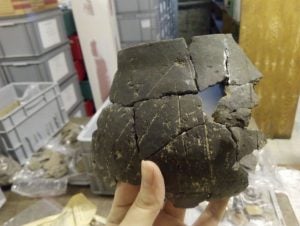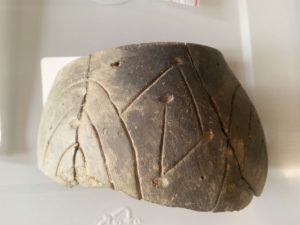A new study published today in Proceedings of the National Academy of Sciences has shown that milk was used by the first farmers from Central Europe in the early Neolithic era around 7,400 years ago, advancing humans’ ability to gain sustenance from milk and establishing the early foundations of the dairy industry.
The international research, led by the University of Bristol in England, deployed a pioneering technique to date dairy fat traces preserved in the walls of pottery vessels from the 54th century BC. This method targets fatty acids from animal fat residues, making it uniquely suited to pinpointing the introduction of new foodstuffs in prehistoric times.
Lead author Dr. Emmanuelle Casanova, who conducted the research while completing her PhD in archaeological chemistry at the University of Bristol, said: “It is amazing to be able to accurately date the very beginning of milk exploitation by humans in prehistoric times. The development of agropastoralism transformed prehistoric human diet by introducing new food commodities, such as milk and milk products, which continues to the present day.”
These settlers of South East, East, and West of Europe were the earliest Neolithic farming groups in Central Europe, known as the Linearbandkeramik (LBK) culture.

The findings of this research showed some of the very first settlers in the region were using milk at scale. This new research expands findings from the University of York in 2019, which identified a milk protein called beta lactoglobulin entombed in the mineralized dental plaque of seven prehistoric British farmers dating to 6,000 years ago. At the time, that was the earliest direct evidence of milk consumption anywhere in the world.
This new work was part of the European Research Council (ERC) NeoMilk project led by Professor Richard Evershed of the School of Chemistry at the University of Bristol. His team analyzed more than 4,300 pottery vessels from 70 LBK settlements for their food residues. The results revealed considerable variation in milk use across the region, with only 65 percent sites presenting evidence of dairy fats in ceramics vessels, suggesting milk use, while common, was not universally adopted by these early farmers.
Focusing on the sites and ceramics with dairy residues, the researchers produced around 30 new radiocarbon dates to chart the advent of dairy exploitation by LBK farmers. These new dates correspond to the earliest LBK settlements during the middle of the 6th millennium BC.

Evershed said: “This research is hugely significant as it provides new insights into the timing of major changes in human food procurement practices, as they evolved across Europe. It provides clear evidence that dairy foods were in widespread circulation in the Early Neolithic, despite variations in the scale of activity.”
This article was published based on early-release data sent by the University of Bristol, and a link to the published study will be included once it is available.


